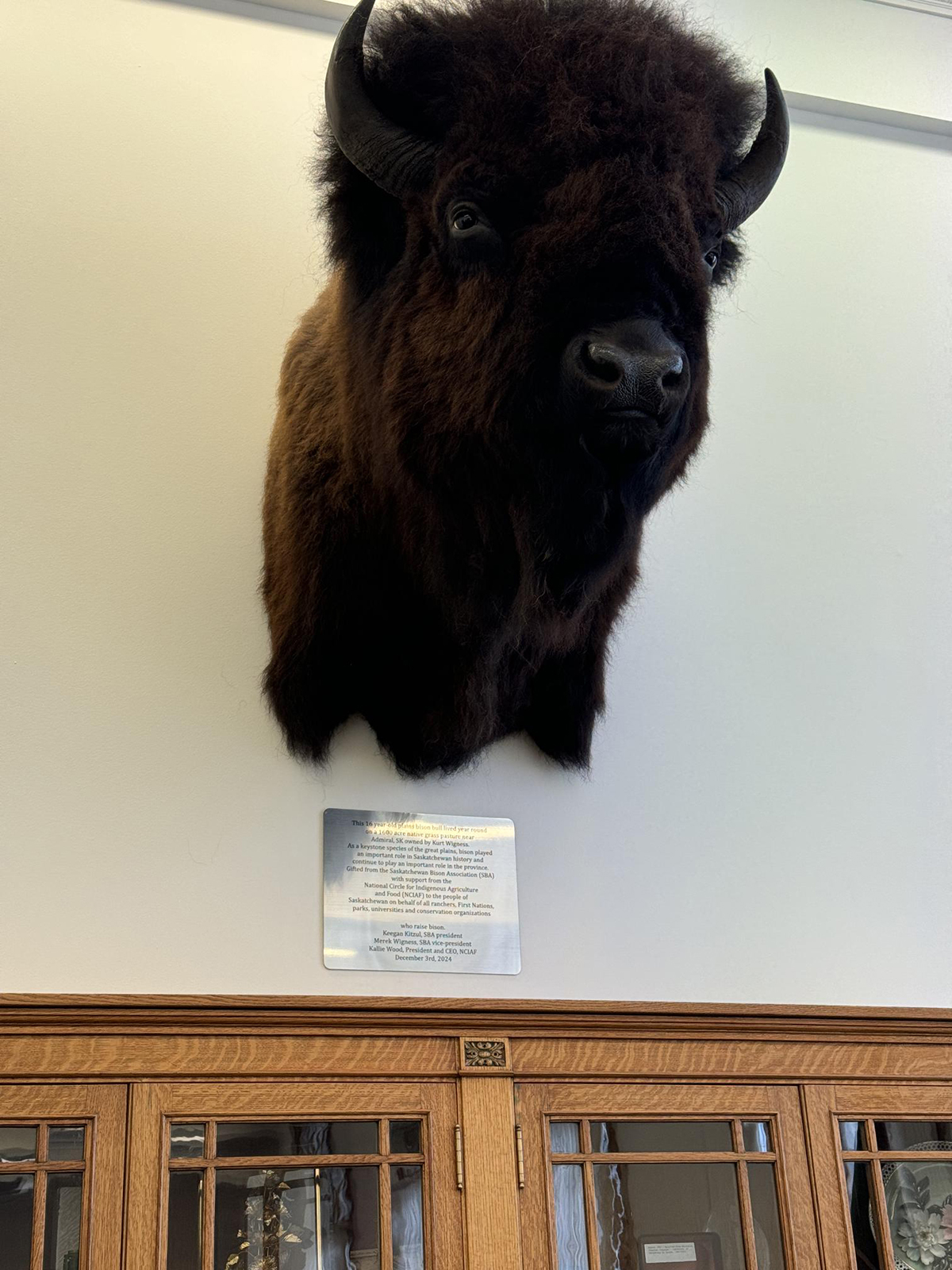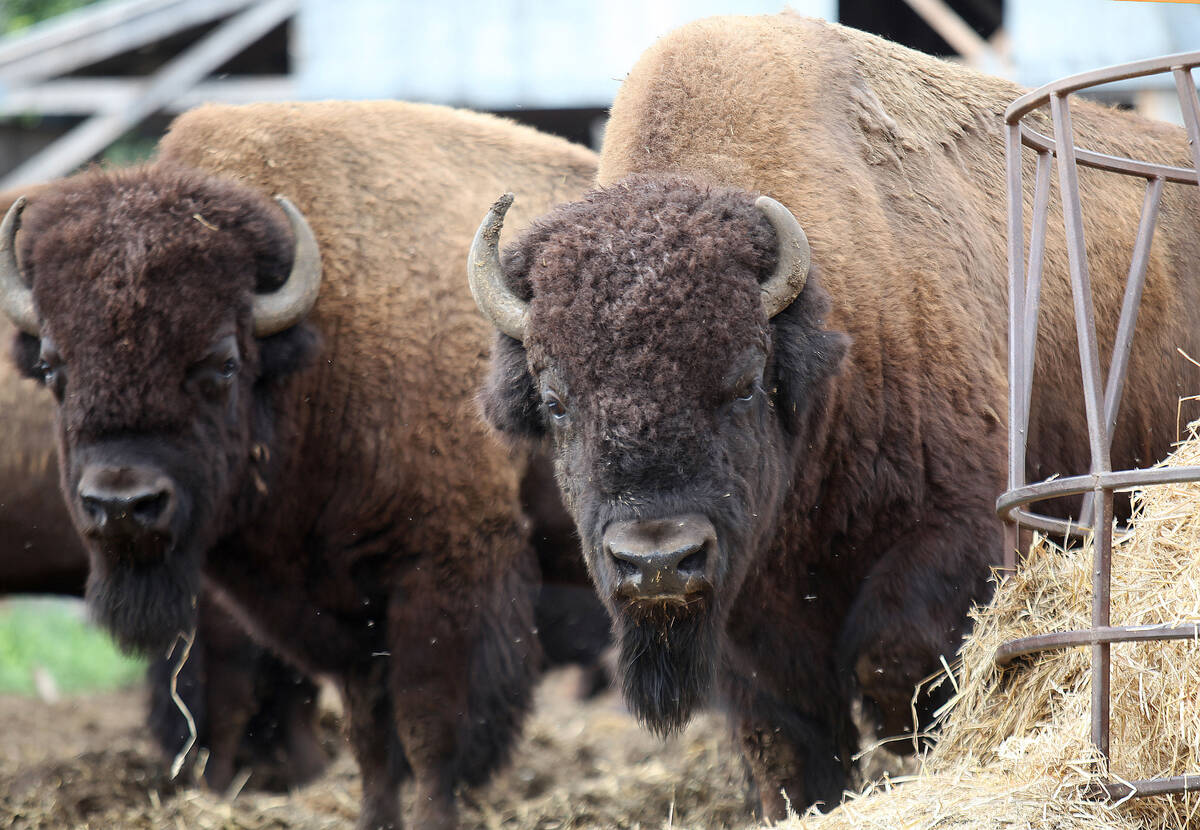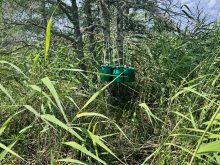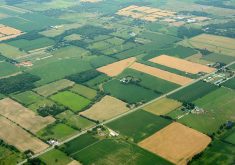Glacier FarmMedia – The Canadian Bison Association and the National Circle for Indigenous Agriculture and Food already have a history of collaboration, but the recent signing of a memorandum of understanding made the relationship more official.
“When you’re doing anything in Indigenous agriculture, buffalo is a huge piece of that,” said Kallie Wood, president and chief executive officer of the Regina-based NCIAF.
The two groups signed the agreement during an event hosted by the Saskatchewan Bison Association in April.
Read Also

Quebec pork company calls for transparency around gene-edited pigs
Quebec-based pork company duBreton is calling for transparency around meats from gene-edited pigs on concerns that a lack of mandatory labelling will confuse consumers, and dilute certification claims. The organic sector is also calling for labelling rules.
Prior to heading up NCIAF, Wood worked as a senior Indigenous adviser in agriculture for the Saskatchewan government. It was through this role that she connected with the Canadian Bison Association (CBA), also based in Regina.
Those connections followed her when she started working with the then just-formed NCIAF in January 2024.
The NCIAF is a Canadian hub for First Nations, Métis and Inuit to work together on agriculture and food security issues and to remove barriers for Indigenous people in agriculture. The NCIAF has an Indigenous advisory council from across Canada, representing various types of agriculture.
“A lot of communities don’t have the capacity to be able to navigate government, industry, academia and try to figure out what the next steps are,” Wood said.
NCIAF’s goal is to bring all those stakeholders together.
“We’re 100 per cent focused on Indigenous agriculture and we support communities,” she said.
“We support Métis regions and we support the Inuit, anything that has to do with food security or food sovereignty and that economic empowerment between communities.”
In December 2024, the CBA joined forces with the NCIAF for the first time.
The industry group and the NCIAF jointly put their names behind an event where the mounted shoulder and head of a bull bison were installed in the Saskatchewan legislature, according to Scott Yule, the CBA’s executive director.

The bison head is in the legislative building’s caucus meeting room, which is used daily by Premier Scott Moe and his caucus.
The mount was a gift from the Saskatchewan Bison Association to the people of Saskatchewan on behalf of all ranchers.
Local First Nations also played a role in the gift. When the bison was harvested at Wigness Bison Ranch in 2023, elders from Nekaneet First Nation did a pipe ceremony at the ranch and smudged the rifle on the day of the harvest.
Following this event at the Saskatchewan legislature, the national bison group and NCIAF started talking about common goals. They later decided to formalize their partnership and to work together on various initiatives.
“A lot of the things that we already do in the CBA are around education and promoting the industry, helping producers and helping marketers who are marketing the meat,” said Yule.
Since many Indigenous people and groups are interested in bison and the bison industry or are part of the sector themselves, the partnership fit.
So far, the two are working together on bison-related projects such as policy advocacy and public awareness.
The bison has enormous cultural significance, particularly to First Nations on the plains, said Wood.
“When you look back over time immemorial, they were our way of life. They provided all our essential resources: our food, our clothing, our shelter, our tools,” she said.
Every part of the bison was used and nothing was wasted.
The bison have a special spiritual significance for Indigenous people. Buffalo are considered relatives, said Wood.
“From the non-Indigenous lens, it’s about production and money. From the Indigenous lens, it’s really about that cultural significance and bringing it (the bison) back,” she said.
Wood said the main barriers for getting involved in Indigenous agriculture are a lack of access to capital and difficulty accessing proper educational information.
On the Prairies, Indigenous residents are mainly interested in crop production and raising bison, said Wood, and more Indigenous farmers are starting to raise bison.
The NCIAF will be hosting the Indigenous Ag Summit at the Canadian Western Agribition Nov. 27-28. The summit will feature a large bison component.
Wood also said the NCIAF is pondering a buffalo harvest with CBA members. It is a ceremony that honours the life of the buffalo and demonstrates how the bison were historically deboned and processed, so no part of the animal is wasted.
Wood said many CBA members have never been to a buffalo harvest.
The CBA has a training program for ranchers getting into bison and is thinking about creating one with an Indigenous focus that is more inclusive, said Yule.
The idea would be that CBA members would share their knowledge about bison ranching, including market access, training and mentorship, while the NCIAF would share its knowledge about Indigenous agriculture, food security and the cultural importance of the bison to Indigenous people.
“I think it’s a win-win,” said Wood.
“It’s beneficial to both parties.”
Wood said the NCIAF speaks regularly with the CBA. The partnership is designed with an eye toward reconciliation, while offering up supports and mentorship.


















